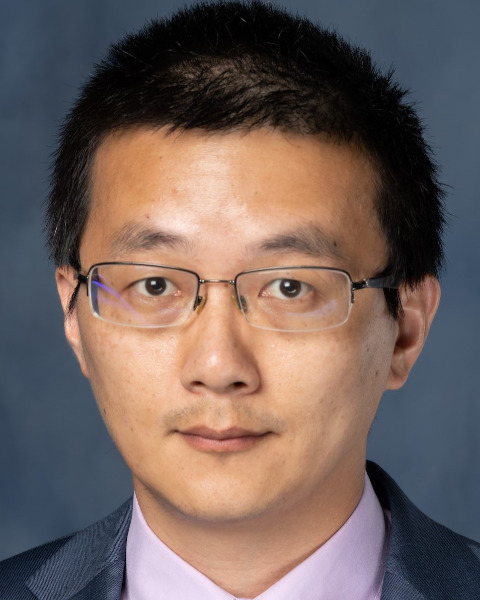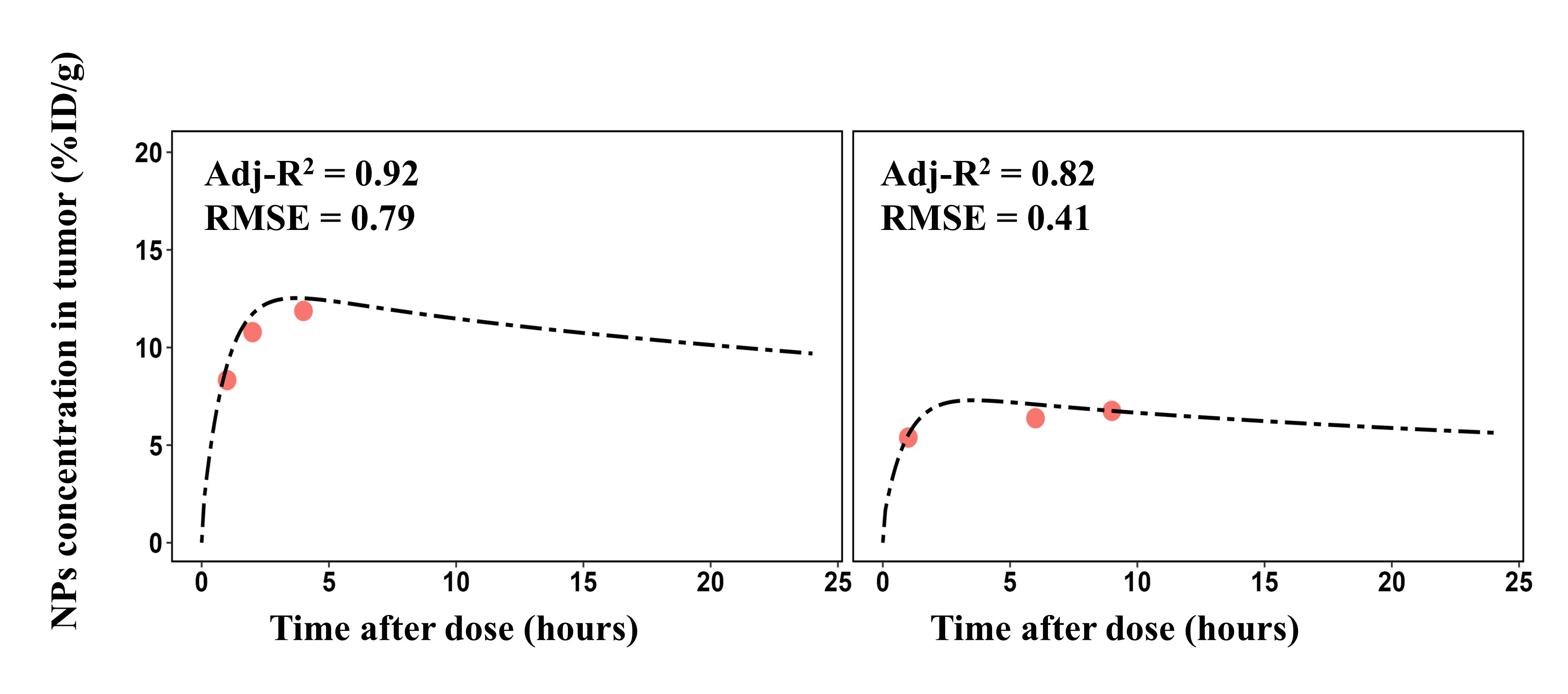Formulation and Delivery - Chemical
Category: Poster Abstract
(W1030-02-09) Development of an Artificial Intelligence-Based PBPK Model for Nanoparticles in Tumor-Bearing Mice

Zhoumeng Lin, BMed, PhD, CPH, DABT, ERT (he/him/his)
Associate Professor
University of Florida
Gainesville, Florida, United States
Zhoumeng Lin, BMed, PhD, CPH, DABT, ERT (he/him/his)
Associate Professor
University of Florida
Gainesville, Florida, United States- WC
Wei-Chun Chou, Ph.D.
University of Florida
Gainesville, Florida, United States - QC
Qiran Chen, Ph.D.
University of Florida
Gainesville, Florida, United States - LY
Long Yuan, Ph.D. (he/him/his)
University of Florida
Gainesville, Florida, United States - YC
Yi-Hsien Cheng, Ph.D. (she/her/hers)
Kansas State University
Manhattan, Kansas, United States - Ch
Chunla he, Ph.D. (she/her/hers)
University of Florida
Gainesville, Florida, United States - NM
Nancy Monteiro-Riviere, Ph.D. (she/her/hers)
Kansas State University
Manhattan, Kansas, United States - JR
Jim Riviere, Ph.D.
Kansas State University
Manhattan, Kansas, United States
Presenting Author(s)
Main Author(s)
Co-Author(s)
Purpose: In the field of cancer nanomedicine, one critical barrier for clinical translation of cancer nanomedicine is a low delivery efficiency of nanoparticles (NPs) to the target tumor site. In recent years, rapid growth of computational power, sophisticated machine learning and artificial intelligence (AI) approaches provide new tools to help address this challenge. In this study, the objective is to integrate machine learning and AI approaches with quantitative structure-activity relationship (QSAR) and physiologically based pharmacokinetic (PBPK) modeling to build an AI-based PBPK model that can simulate tumor-targeted delivery efficiency (DE) and biodistribution of various NPs in mice based on physicochemical properties.
Methods: A flowchart of the methodology of this study is illustrated in Figure 1. Briefly, an AI-based QSAR model was built to estimate four key parameters for incorporation in to an existing traditional PBPK model (Cheng et al. 2020), resulting in an AI-based PBPK model. These four key parameters were maximum uptake rate constant (KTRES_max), release rate constant (KTRES_rel), Hill coefficient (KTRES_n) and time reaching 50% maximum uptake rate (KTRES_50) of NPs in the tumor compartment. All data used to train the AI-based QSAR model were from a published “Nano-Tumor Database” (Cheng et al. 2020). Five different machine learning algorithms including linear regression (LR), support vector regression (SVR), random forest (RF), XGBoost (eXtreme Gradient Boosting) and LightGBM (Light Gradient Boosting Machine), as well as a deep neural network (DNN) or deep learning (DL) model were used to train the AI-based QSAR model. The model performance was evaluated via internal and external nested 5-fold cross validation strategies with the root means square error (RMSE) and adjusted determination coefficient (R2) as performance metrics. The AI-PBPK model-predicted pharmacokinetic profiles were also compared with the original experimental datasets to evaluate the model performance.
Results: Among all the selected machine learning and DL models, the DL model had the best performance with the highest R2 values and lowest RMSE values. Specifically, the R2 values were 0.47, 0.53, 0.91 and 0.23 for KTRES_rel, KTRES_n, KTRES_max, and KTRES_50 in testing set, respectively, while these values from 5-fold cross validation were 0.67 ± 0.34, 0.47 ± 0.23, 0.44 ± 0.29, and 0.22 ± 0.37. The similar ranges of R2 and RMSE between the results from 5-fold cross validation and test set in the DL model indicate that the DL model was reliable and there were no overfitting problems. The PBPK model with optimized NP cellular uptake kinetic parameters was used to predict the maximum delivery efficiency (DEmax) and DE at 24 (DE24) and 168 hours (DE168) of different NPs in the tumor after intravenous injection and achieved a determination coefficient of R2 = 0.83 (RMSE = 3.01) for DE24, R2 = 0.56 (RMSE = 2.27) for DE168, and R2 = 0.82 (RMSE = 3.51) for DEmax. The AI-PBPK model predictions correlated well with available experimentally-measured pharmacokinetic profiles of different NPs in tumors after intravenous injection (R2 ≥ 0.70 for 133 out of 288 datasets). Representative evaluation results of comparisons between the AI-PBPK model predictions versus experimentally measured pharmacokinetic profiles of NPs in tumors is shown in Figure 2.
Conclusion: This study develops an AI-based PBPK model that can be used to predict tumor delivery efficiency of different types of NPs in different types of tumors in mice based on the physicochemical properties of NPs and the study design information. This modeling strategy can be applied to other animals and humans. This AI-PBPK model represents an emerging research paradigm of integrating robust machine learning and AI algorithms with well-curated large pharmacokinetic databases of NPs to build better and more accurate computational models to support design and evaluation of cancer nanomedicines.
References: Bae Y, Nishiyama N, Kataoka K. In vivo antitumor activity of the folate-conjugated pH-sensitive polymeric micelle selectively releasing adriamycin in the intracellular acidic compartments. Bioconjug Chem. 2007;18(4):1131-9.
Cheng YH, He C, Riviere JE, Monteiro-Riviere NA, Lin Z. Meta-Analysis of Nanoparticle Delivery to Tumors Using a Physiologically Based Pharmacokinetic Modeling and Simulation Approach. ACS Nano. 2020;14(3):3075-3095.
Guo X, Shi C, Wang J, Di S, Zhou S. pH-triggered intracellular release from actively targeting polymer micelles. Biomaterials. 2013;34(18):4544-54.
Acknowledgements:The study was supported by the National Institute of Biomedical Imaging and Bioengineering of National Institutes of Health (Grant Number: R01EB031022).
 Figure 1. Overview of the computational workflow to integrate machine learning and deep learning models with physiologically based pharmacokinetic (PBPK) modeling to predict delivery efficiency of nanoparticles (NPs) to the tumor site in tumor-bearing mice. (A) Step 1: Nano-Tumor Database, (B) Step 2: Development of AI-QSAR model, (C) Step 3: AI-assisted PBPK model. Abbreviations: DNN, deep neural network; Adj-R2, adjusted coefficient of determination; RMSE, Root mean square error; KTRES_max, maximum uptake rate constant of tumor cells; KTRES_50, time reaching half maximum uptake rate of tumor cells; KTRES_n, Hill coefficient for the uptake of tumor cells; KTRES_rel, release rate constant of tumor cells.
Figure 1. Overview of the computational workflow to integrate machine learning and deep learning models with physiologically based pharmacokinetic (PBPK) modeling to predict delivery efficiency of nanoparticles (NPs) to the tumor site in tumor-bearing mice. (A) Step 1: Nano-Tumor Database, (B) Step 2: Development of AI-QSAR model, (C) Step 3: AI-assisted PBPK model. Abbreviations: DNN, deep neural network; Adj-R2, adjusted coefficient of determination; RMSE, Root mean square error; KTRES_max, maximum uptake rate constant of tumor cells; KTRES_50, time reaching half maximum uptake rate of tumor cells; KTRES_n, Hill coefficient for the uptake of tumor cells; KTRES_rel, release rate constant of tumor cells.  Figure 2. Representative evaluation results of comparisons between the AI-PBPK model predictions experimentally measured pharmacokinetic profiles of NPs in tumors. NP concentration in tumor (%ID/g) predicted from the PBPK model with optimized parameters (dashed line) compared to the observed NPs amount in tumor from experimental data (black closed circles) for 2 randomly selected studies by (A) Guo et al. (2013)
Figure 2. Representative evaluation results of comparisons between the AI-PBPK model predictions experimentally measured pharmacokinetic profiles of NPs in tumors. NP concentration in tumor (%ID/g) predicted from the PBPK model with optimized parameters (dashed line) compared to the observed NPs amount in tumor from experimental data (black closed circles) for 2 randomly selected studies by (A) Guo et al. (2013)and (B) Bae et al. (2007). Tumor tissue concentrations as presented in the y-axis are expressed in the units of percent of the injected dose (%ID/g) according to units used in the original articles. Adj-R2, adjusted coefficient of determination; RMSE, Root mean square error.
